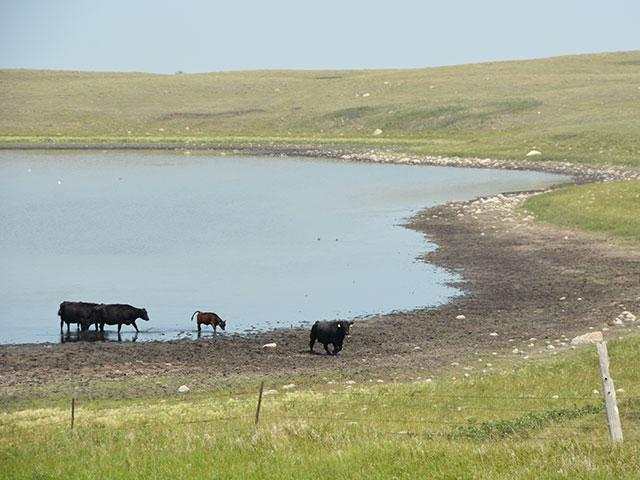Lost Season
Drought-Hit Cattle Producers' Year May Already Be Done
Deep into the month of May, the season may already be over for cattle producers in some of this country's hardest-hit drought areas.
The latest national USDA Crop Progress report rated about half of the country's pasture and range conditions as poor, or very poor. That is bad news, on a historical level, said Oklahoma State University's livestock marketing specialist Derrell Peel.
The veteran analyst noted in his weekly report that only twice before have things been this bad. One was May 2021, the other May 2013. But neither case had such a high percentage of pastures in such bad condition this early in the year.
For the week ended May 15, 2022, 49% of the country was reported to have pasture and range in poor to very poor conditions.
"Obviously, we are starting in a really big hole in terms of the drought conditions that we have," he said.
P[L1] D[0x0] M[300x250] OOP[F] ADUNIT[] T[]
Peel told DTN that even if things turned around tomorrow, conditions have already set the stage for continued herd liquidation, possibly into 2023.
"This herd liquidation has largely been driven by physical conditions, namely the drought," he said. "So, clearly, if that persists, we may not be done with liquidation. But even if the drought backs off and becomes less of an issue, we still have a lot of economic signals to consider this year.
"Without drought, we might see liquidation slow, but I am not sure we'd see anyone looking to expand due to these high input costs. In other words, even if they could expand, I don't know that they would," he explained, adding that the best case is the herd numbers stabilize moving into 2023.
Peel told DTN that for now, he expects to see culling continue, and replacement heifers continue to show up in the feedlots.
"The way it looks right now, I believe we will see additional culling," he said. "There just aren't the resources needed to hold onto the cows in many areas right now. As for the replacements, we didn't start with a large inventory of them this year. I think that number gets tighter as we move forward."
Is there enough time for a turnaround? Peel said that in a few areas, if the drought suddenly ended, there might be some cases where producers could salvage part of the season. But the clock is ticking, forages are stressed, and every day a turnaround becomes less likely.
"In the southern half of the region, we are well into what should be the time for rapid forage growth. If we go another two to four weeks in the shape we are in today, we lose a significant part of the rest of the season. Up North, maybe we have a month to recover? But we are already in drought in a lot of places, and we just are not seeing growth at this point," he said.
Peel added that spring drought is especially tough when there are low carryover hay supplies -- which is the case in many areas. That leaves those producers who are fighting this cycle of drought basically looking at this time next year before they can hope to see impactful improvements.
WORST STATES FOR PASTURE AND RANGE RIGHT NOW
The May 15 report on pasture and range shows several states in double-digits for "very poor" conditions. Those include: Colorado (33%), Kansas (16%), Minnesota (13%), Montana (43%), Nebraska (17%), Nevada (15%), New Mexico (16%), Oklahoma (19%), South Dakota (17%), Texas (48%), and Wyoming (33%). Across 48 states, pasture and range conditions rated "very poor" in the report averaged 25%. Another 24% were rated "poor."
Victoria Myers can be reached at vicki.myers@dtn.com
Follow her on Twitter @myersPF
(c) Copyright 2022 DTN, LLC. All rights reserved.






